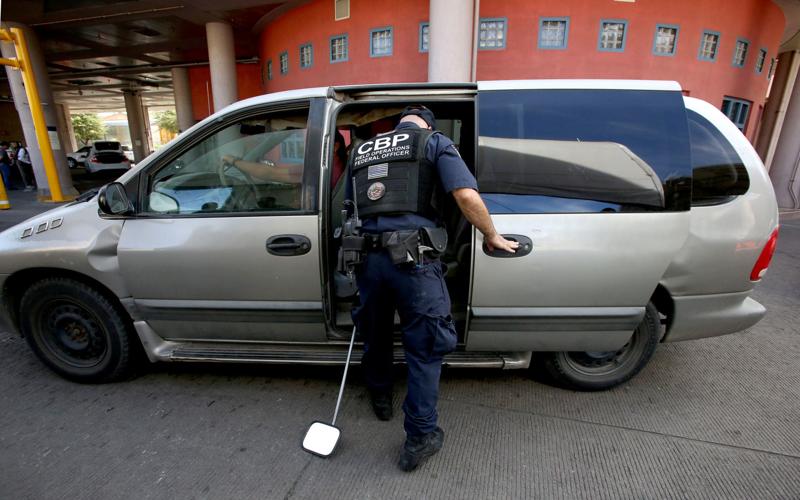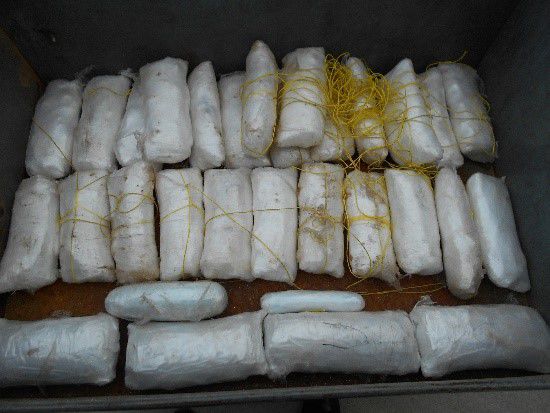Busts of fentanyl are on the rise along the border in Arizona and California, federal data show.
Federal authorities have seized more than 7,000 pounds of the powerful synthetic opioid along the U.S.-Mexico border since October, compared to roughly 4,500 pounds seized in all of fiscal 2020, according to data from Customs and Border Protection.
Since October, nearly 90% of the fentanyl seized at the border followed busts in Arizona and California.
Tiny amounts of fentanyl can lead to fatal overdoses, often when a person unknowingly takes fentanyl after it was mixed with another drug, such as heroin or methamphetamine. Fentanyl is linked to many of the roughly 90,000 fatal overdoses reported across the country last year, according to the Centers for Disease Control.
In Pima County, fatal overdoses linked to fentanyl rose from 102 in 2019 to 238 in 2020, according to the Pima County medical examiner’s annual report. Fentanyl accounts for 58% of the 153 overdose deaths in Pima County through April.
Since fentanyl first started being smuggled across the border several years ago, ports of entry near San Diego have been the most common sites of seizures “by a fairly wide margin,” said Scott Brown, special agent in charge of the Phoenix field office of Homeland Security Investigations.
“But really, the top ports have ranged between Nogales and San Diego,” while border areas east of Arizona have seen “significantly less fentanyl,” Brown said.
Customs officers at ports of entry near San Diego seized 4,075 pounds of fentanyl since October, or 58% of all fentanyl seized at the border during that period. In Arizona, busts at ports of entry accounted for 1,474 pounds, or 21% of the borderwide total.
Border Patrol agents, who work in remote areas rather than at ports of entry, seized much less fentanyl than customs officers, CBP data shows. Agents in California seized 374 pounds of fentanyl, or about 5% of the total. Agents in Arizona seized 245 pounds, or about 3% of the total.
Texas and New Mexico, which together cover three-fourths of the border, accounted for just 12% of fentanyl seizures since October. Customs officers seized 720 pounds, or 10% of the borderwide total, while Border Patrol agents seized 150 pounds, or about 2% of the total.
Several factors play into why fentanyl is more common in the western part of the border, Brown said.
Mexican traffickers initially relied on importing fentanyl from China, with ports of entry in California and Arizona serving as the easiest routes into the United States, Brown said.
Now, the Sinaloa and Tijuana cartels that operate south of Arizona and California produce fentanyl on their own in Mexico, but they still rely on precursor chemicals from China.
Cartels in Mexico also differ in how they make their money, Brown said.
“Both the Sinaloa cartel and the Tijuana cartel have been more heavily focused on the narcotics trafficking business and less heavily focused, while still involved, in the human smuggling trade,” Brown said.
“We’re seeing the eastern cartels getting more engaged in human smuggling as a source of profits, so fentanyl is less of a source of their profits than they are for the traditional and probably stronger drug cartels,” Brown said.
Federal court records in Tucson show many of the recent fentanyl busts involved U.S. citizens, who are are subject to fewer pandemic-related travel restrictions at the border than Mexican citizens, hiding packages of fentanyl in their vehicles or under their clothes as they crossed into Arizona from Mexico at ports of entry.
In a typical incident from May 27, a woman drove her Chevrolet Impala into the Douglas port of entry, where a CBP canine smelled a suspicious odor under the car, according to court records. Officers put the car on a lift and found 107 packages of fentanyl, weighing 31 pounds, in a hidden compartment. She said she crossed into Mexico on foot earlier in the day, spent a few hours at a hotel, and then drove to the port after her friend brought her car to her.
In another common scenario from June 7, a woman drove to a port of entry in Nogales, where customs officers “noticed her hands and voice were shaky,” according to court records. After questioning and a pat down by an officer, she removed a package of fentanyl pills, weighing about one-fourth of a pound, she had hidden inside her body.
The next round of monthly CBP data on drug seizures will be released in the first or second week of July.





